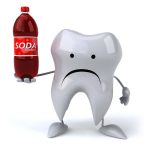Open for Discussion: Healthy Dose of Skepticism
February/March 2015
By Michael Tinnesand
Being thoughtful about what we do and why we do it is essential in the study of science. You may have heard of widely believed facts that seem to make sense, but then, on second thought, you realize that such facts do not hold up to scrutiny. This thoughtfulness is sometimes referred to as “healthy skepticism,” or the ability to know whether an explanation makes sense, based on the evidence observed. Here are three examples of widely believed facts which are not borne by evidence (and may surprise you!)

“Adding salt makes pasta cook faster”
Many cooks believe that adding salt to water will make their pasta cook faster. There is a good basis for this, at least in theory. Adding salt, or any nonvolatile solute to water will raise the boiling point. This is called a colligative property. And, hotter water will cook foods, including pasta, faster. The problem is that the typically small amount of salt added to pasta water makes very little difference in the boiling temperature. You would need to add a lot of salt to make much of a difference, which would likely make the pasta inedible.

“Soda is so acidic it can dissolve a tooth overnight”
This myth got its start from a nutritionist who made the claim in the 1950s. Sodas contain acids, such as phosphoric, citric and carbonic acid. But their concentrations are lower in soda than in natural drinks, such as orange or cranberry juice. When left in soda, a tooth will not completely dissolve overnight, or even over a few days. Also, when we drink soda, we don’t tend to hold it in our mouths for long periods of time, and the saliva in our mouths helps protect the enamel.
But this does not mean that soda is harmless to teeth. High-sugar drinks can contribute to tooth decay, and acidic drinks can erode tooth enamel over time. The reason is that although enamel is hard, the substance that makes up most of it, hydroxyapatite [Ca5(PO4)3OH], is in equilibrium with its dissolved form, like any ionic solid in the presence of water. At equilibrium, most of hydroxyapatite is in solid form:
Ca5(PO4)3OH(s) → 5Ca2+(aq) +3PO43-(aq)+OH-(aq)
But when an acid is added, its free hydrogen (H+) ions neutralize some of the hydroxyl (OH–) ions, as follows:
H+ + OH– → H2O
This shifts the equilibrium to the right, causing more hydroxyapatite to dissolve, thus dissolving the tooth enamel.

“Swallowed gum stays in your stomach for seven years”
It seems pretty logical to believe this myth based on our own experience with chewing gum. Take a stick of gum and you can chew it for hours, with little change in its texture, although the flavor tends to fade. This is because while the gum resins are indigestible, the sugar and flavorants are both soluble and digestible. If the gum is swallowed, it flows through your stomach and intestine with the digestive fluids, bile and other undigested foods. Your stomach and intestines are very smooth and there is no real way for gum to get stuck in your stomach. Under your school desk, maybe. In your stomach, no.

